Medical writings have documented the use of electrical currents for healing purposes since the 19th century. Electrotherapy belongs to the passive treatment methods and stimulation series therapy. This means that both the resting potential of the cell and the cell membrane are influenced by a direct electrical effect on the skin and thus on the cell environment. This influence produces desired reactions such as pain relief, increased blood circulation, changes in muscle tension – be it an increase or decrease – as well as the induction of individual muscle contractions. The method also makes it possible to administer medication through the intact skin.
The effects of the electric current vary depending on the current density, i.e. the current intensity in mA per square centimeter. The dosage is based on individual tolerance and is classified as “just perceptible”, “barely perceptible” or “clearly but not painfully perceptible”. Electrodes are used to transfer the current to the patient. These can take the form of adhesive electrodes or metal plates in moist sponge pockets and are applied directly to the skin. It is also possible to use water as a conductive medium, as is the case with the Stanger bath or the four-cell bath, for example.
Electrotherapy uses electrical currents with different frequencies that reflect the number of oscillations per second, measured in Hertz. Some of these frequencies can be felt as vibrations or pulses. For self-treatment at home, patients can use small battery-operated devices such as TENS, FES and/or muscle stimulators such as EMS (electrical muscle stimulation), which can be easily attached to clothing under the guidance of a doctor or physiotherapist.

Electrotherapy works by applying electrical currents to the human body. It can influence the tissue and muscles in various ways:
Electrotherapy is carried out using special devices that generate electrical impulses and transmit them to the skin through electrodes. Different types of current forms and frequencies can be used depending on the application and goal. However, professional assessment and guidance should be provided before use to ensure that electrotherapy is applied correctly and the best possible results are achieved.
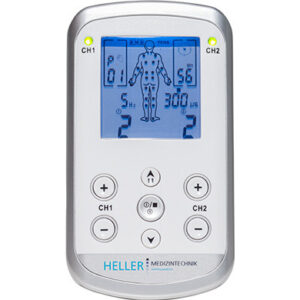
incl. 19% VAT
zzgl. Versandkosten
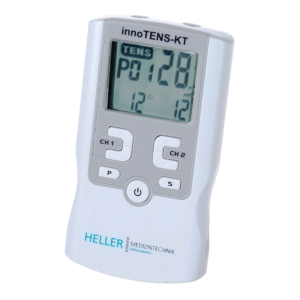
incl. 19% VAT
zzgl. Versandkosten
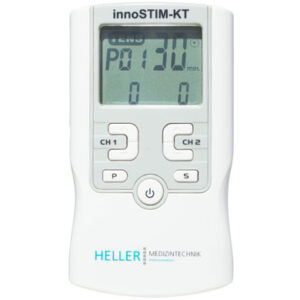
incl. 19% VAT
zzgl. Versandkosten
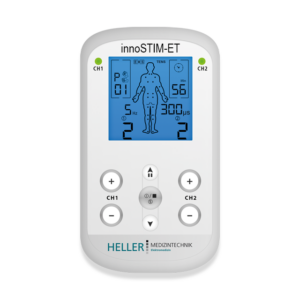
incl. 19% VAT
zzgl. Versandkosten
Low-frequency stimulation currents stimulate nerve and muscle fibers, triggering muscle contractions. This makes it possible to maintain function and reduce weakening, particularly in weakened and partially paralyzed muscles.
High-frequency therapy leads to a warming of deeper tissues in the body. It has a beneficial effect on blood circulation and pain relief, while at the same time stabilizing muscle tension. Metabolic and immune processes can also be stimulated by stimulating electrical currents in the body.
Depending on the form of application, medium-frequency alternating currents or interference currents have either a pain-relieving or stimulating effect, accompanied by muscle contractions and subsequent muscle relaxation. This increases blood circulation, reduces swelling and relaxes the muscles.
Galvanic currents cause a reduction in pain through the movement of electrically charged particles (positive and negative ions) and can support the healing processes by promoting blood circulation and increasing the metabolism in the perfused tissue.
The areas of application for electrotherapy are many and varied:
Accordingly, electrotherapy is used in the following areas:
Swelling (oedema) can be reduced particularly effectively if electrotherapy is combined with physiotherapy methods such as lymphatic drainage or active exercise therapy.
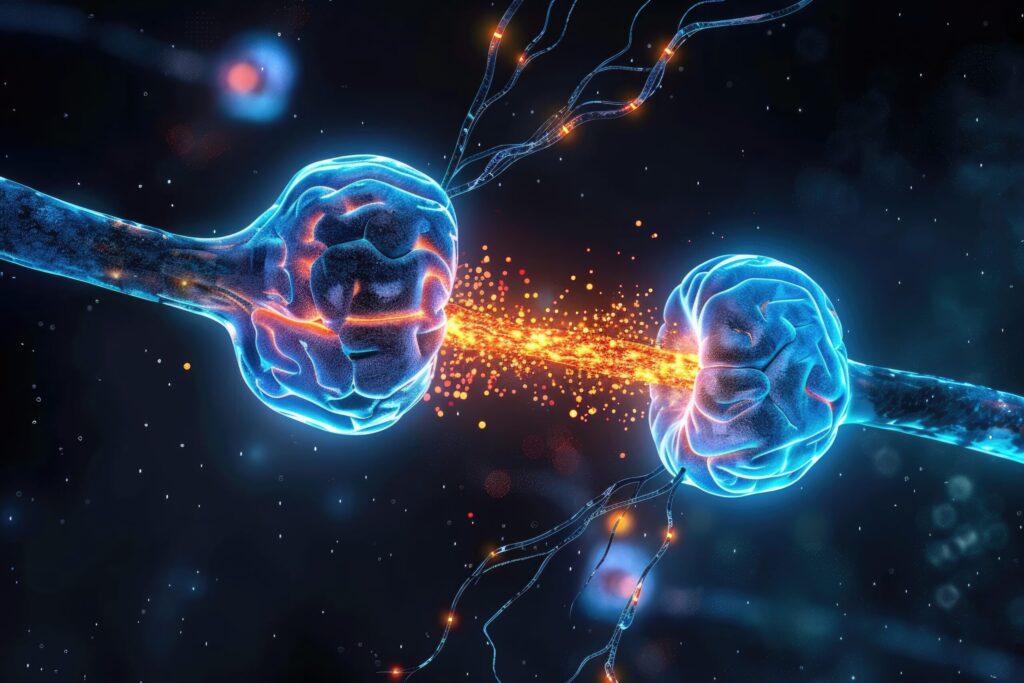
The benefits of electrotherapy are manifold and make it a popular treatment method:
Non-invasive: Electrotherapy offers a non-invasive alternative to surgical procedures for pain relief and muscle rehabilitation.
Customizable treatment: Therapy can be tailored to specific areas and the patient’s individual needs.
Drug-free pain relief: For those seeking drug-free pain relief, electrotherapy offers a promising solution.
Improved healing: By stimulating cell activity, electrotherapy accelerates the body’s natural healing processes.
Improved muscle function: Athletes and people undergoing physiotherapy can benefit from improved muscle strength and function.
Other forms of therapy should be preferred to electrotherapy for the following conditions or findings:
No, electrotherapy is not painful. Patients may feel tingling or muscle contractions, but the treatment is generally well tolerated.
The duration of a session can vary, but is usually between 15 and 60 minutes, depending on the treatment goals.
Although electrotherapy is considered safe, some patients may experience skin irritation or mild discomfort. It is important that you communicate any concerns to your therapist.
The number of sessions required depends on the specific condition to be treated. Your therapist will determine the optimal treatment plan for you.
Yes, electrotherapy can complement other treatments such as physiotherapy and medication. It is important to discuss possible interactions with your healthcare provider.
Electrotherapy can be used in different age groups, from adolescents to the elderly. However, an individual assessment is required to ensure suitability.
HELLER MEDIZINTECHNIK GmbH & Co. KG has been a certified medical technology company for over 25 years and has many years of experience in designing solutions in the field of electrical nerve and muscle stimulation.
2025 © HELLER MEDIZINTECHNIK GmbH & Co. KG